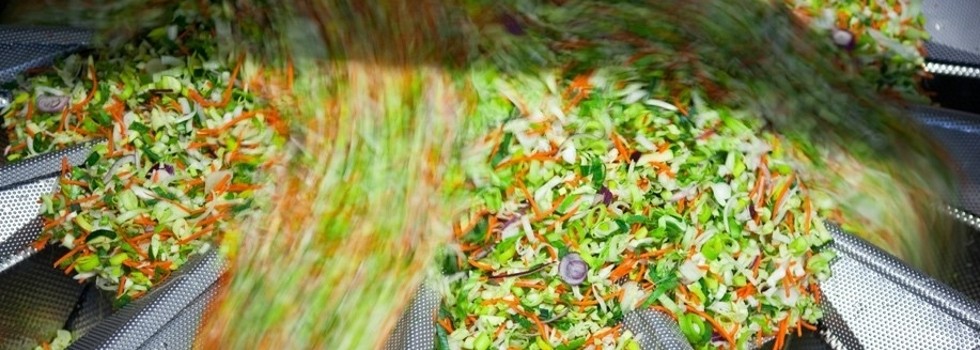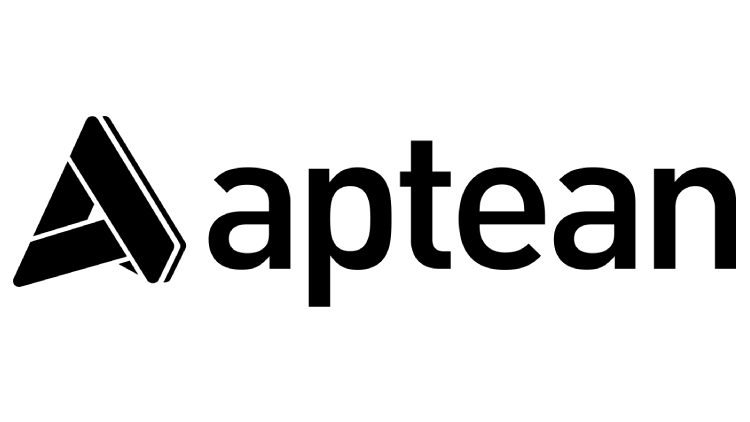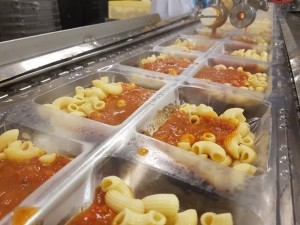Promotional Features
Why recipe-managed businesses need robust automated processes
An automated system that provides transparency throughout the supply chain and production process has huge cost and safety advantages for a recipe-managed food manufacturing business. So why are so many still resorting to manual paperwork and spreadsheets?
With food inflation rocketing from 0.3% in autumn last year to 7% by May this year1, it has never been more important for food manufacturers, particularly those with recipe-managed businesses, to keep costs under control.
Yet the increasing costs of raw materials, driven by EU import and export controls, fuel prices, recent driver shortages and ingredient substitution, has left food manufacturers floundering. Moreover, the recent rises in energy prices have affected food and drink manufacturers more than any other industry, according to a recent report2.
In such a volatile environment and with increasing pressure on the supply chain to manage production safely, food manufacturers need to have a keen eye on every stage of their process, ensuring full forwards and backwards traceability of their finished goods on to the client that can be traced back to the raw materials used to create recipes.
Also, to maximise cost-effectiveness, stocks need 100% transparency around what is required to deliver against the demand, but also what needs to be used in the recipe and by when, so live verification and alerts will avoid overstocking and waste.
It’s a huge task, particularly in an increasingly complex food and drink environment, where raw materials could potentially be sourced from anywhere around the globe.
Crucial need for visibility
At the recent World Economic Forum in Davos, in May this year, Kathleen O’Reilly, global lead, strategy at information technology and consulting company Accenture, noted: “Companies face instability caused by supply and material shortages, price inflation, logistics disruptions and labour constraints – all of which are exacerbated by the ongoing global pandemic and the shattered peace in Europe… Businesses must not only have flexible manufacturing, strategic inventory buffers and diversified supply sources, but also strategic supply chain risk management solutions. Visibility is crucial for resilient supply networks. Companies must be able to identify gaps and quickly address them to withstand disruption and enable sustainability and resiliency that delivers growth, not just survival.”3
So how is 360-degree visibility in a recipe-managed food manufacturing business expected to be achieved?
According to Aptean, a leading supplier of industry-specific software, the answer lies in digital transformation of how a business operates. Yet many food manufacturers are still relying on antiquated pen, paper and spreadsheet methods to manage complex manufacturing processes. “It is amazing how they still run these multi-million pound factories using paperwork and spreadsheets in what is, in effect, the most complicated areas of their business,” says Aptean regional account manager Nigel Cappleman.
He believes the day will soon arrive when the Foods Standards Agency requires companies that are producing food – however artisan they may be – to have a digital system to support their processes, particularly with issues such as food safety and allergens management under increasing scrutiny. That aside, however, he points to the massive cost and labour efficiencies in terms of yield and mass balance, along with ease of process and auditing capability that can be achieved with a digital system.
“Take ready meals, which are incredibly complex: you have recipes that sit inside a recipe. With a paper trail, if someone has written down a wrong number for one element of those recipes, then you’ve lost your trace,” he notes. “So retrieving the information when you are audited [by a retailer] is really difficult.”
Cappleman points out that in the ready meals industry – whether a company is making its own brand or a ready meal for one of the big retailers – the complexity and labour intensity is huge. “I visited a factory recently where they have five or six intake bays and three or four different areas all doing their piece towards the finished goods.
“So, for example if a manufacturer is making pies, one section might be the butchery that’s handling primals of meat, where they need to check the yield, then another section is bringing in all the ingredients for the gravy, but then they also have flour silos, as they are making their own pastry with a margarine or butter mix… and then it all goes to assembly with inside packaging for the tray and outer packaging for the client. That’s a whole gamut of materials being managed and it’s crazy to think people can handle this with pen and paper for the plan, batch and traceability records and QA and technical checks.”
Multiple functions
Goods intake and monitoring is really the tip of the iceberg, he notes, as there are plenty of other factors to consider, including forecasting demand and materials requirements, reporting on variances in the cost of production against the expected standard, to ensure the optimum margin on the finished product is achieved; and the flexibility to plan production and react to any unforeseen problems as they arise, such as downtime.
This, says Cappleman, is where Aptean’s manufacturing execution system (MES) for food manufacturers comes in. Other systems, he notes, offer a level of functionality based on manufacturing resource planning (MRP), such as purchasing for the supply chains and production scheduling, but what they don’t do is “the bit in the middle where all the complexity happens”, which is where Aptean’s solution excels.
As a modular system, Aptean’s solution can be implemented initially at intake and work forwards through to the finished goods and despatch or start at the end, with finished goods labelling to give visibility of what is on hand to pick and despatch against orders.
“With other systems, whether you are making a cheese or building a car, you are getting everything in one bundle, whether you need it or not,” he says. “Where those systems struggle is when it comes to the combination of specs for building a car or making a recipe, which they can manage loosely. But what they tend not to have is the specificity – eg the weighing, labelling and tracking – for each stage of the process… in other words, the MES and that’s what Aptean's solution is built on.”
Where other systems often fall down is when a reduction specification is required to be managed and reported upon. Take, for example a carcase or side of beef, where a company needs to cut it down into all its primal parts and then onto individual units such as a steak. Aptean can report on how it yields through the process, against an expected standard and present not only a full mass balance but also traceability for where all the production is consumed, either as a single unit or into a recipe.
“The savings for utilising an automated system for food factories is huge; we have delivered business cases for clients showing an ROI in 12 months. A quick rule of thumb is whatever your raw material spend is per annum, by using Aptean, you have the ability to save between 3-5% of that raw material spend – and that’s made up by time, wastage, poor yields and eradicating credits for mis-picks.
Utilising unique identifiers or bar codes, the system provides bi-directional traceability of stock at each stage of the process, offering full stock transparency, its age and life left, alerts for stock at risk and weight or unit of measure. Not only does this allow a business to manage its levels of stock efficiently, optimising its path through the manufacturing process and enabling supply chain managers to forward plan, but it allows the manufacturer to analyse its suppliers’ product quality, delivery efficiency and prices, also reporting on how a product yields against the price paid.
Aptean’s cost modelling application can map out a reverse bill of materials for each item, allowing the user to track the cost of an ingredient through the whole process of production, while the system enables operators to visualise and control multiple mixes from component ingredients at each stage of a recipe, looking at the stock available or working on a first-in, first-out basis to manage stock rotation effectively and minimise waste.
“With Aptean’s MRP module you can see on one screen, all your raw materials, ingredients and packaging requirements against your sales forecast or actual orders. The system then presents where a business does not have enough materials to meet the demand, also taking into account your supply lead time,” says Cappleman. “You can then key in suggested order quantities, which can be created into soft purchase orders and sent to the person in charge of purchasing. Once it is a live order, that will show up on the screen and the shortage will be moved out to a future date. With a system like this, you should never really run out of stock again.”
Real-time scheduling of checks and control points also enables safer governance of allergenic ingredients, with live recipe control ensuring raw materials comply with legal and food safety standards.
As cost modelling also handles the raw material prices of an item, the system can generate ‘what if’ scenarios. For example, in a recipe that contains pork, any new prices per kilo for pork can be input and will filter through at each stage to then show, against a current selling price, what effect that has had on the margin of a finished good. “This is a massive benefit for businesses at the moment [given food inflation],” says Cappleman. “Cost modelling is the backbone for pricing and how the factory should work downstairs at operator level.”
Production control
Production planning and scheduling is another area where Aptean’s solution comes into its own, he explains. The system can analyse capacity per shift per day and, by dragging and dropping electronic orders into the module, can produce, in a matter of minutes, a plan for the day, the week or the next couple of weeks, depending on requirement. If a production plan changes – for example, due to unforeseen downtime – real-time shop floor data capture enables the planner in the back office to update it and then republish so that all operators in the business know, via connected screen monitors, that they are working on the latest version of the plan.
Removing the potential for human error makes it quick and easy for operators on the shop floor to use, he says, while ease of auditing and cost/price management gives food manufacturers a strong case for negotiation with retailers. Meanwhile full training and system support from Aptean ensure smooth transfer to the system.
While all of this may sound scarily scientific and analytical, Cappleman is keen to point out that Aptean works with individual clients to analyse each one’s problem and where the solution can best be applied. “It’s about really understanding the client process and uncovering where their problems are, then coming up with a solution,” he says. “The modular system allows us to do that. Where we can assist and help ease the manufacturing complexity, as well as make big savings, then it’s a real case for manufacturers to use these types of automated systems.”
To discover more about Aptean’s food and beverage manufacturing solutions, go to www.aptean.com
Sources
1 https://tradingeconomics.com/united-kingdom/food-inflation
2 https://www.ons.gov.uk/businessindustryandtrade/business/businessservices/articles/recentchallengesfacedbyfoodanddrinkbusinessesandtheirimpactonprices/2022-04-04
3 https://www.weforum.org/agenda/2022/05/leaders-supply-chains-davos-2022/




